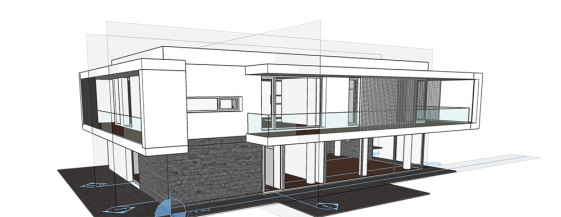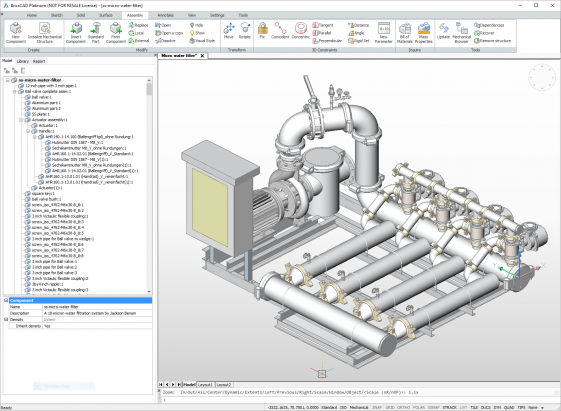Bricsys is betting CAD users want to keep using .dwg data and drafting workflows while taking advantage of 3D advances.
In a CAD industry plot line ripped directly from the pages of The Mouse that Roared, Bricsys this week puts forth an update to its .dwg-based CAD program, offering a wireframe 2D/3D alternative for building information modeling (BIM), sheet metal design, and other modern engineering tasks.
The Ghent, Belgium company has been successful for many years with BricsCAD, which provides an alternative to AutoCAD while maintaining the ability to read and write in the .dwg format AutoCAD popularized. In recent years Bricsys has become more aggressive about being more than an AutoCAD clone. It has courted a small army of third-party developers, adding country- and task-specific functionality to BricsCAD. The end result is a wide variety of custom CAD tools priced thousands of dollars less than equivalent offerings from Autodesk and its network of add-on developers.

This week Bricsys is releasing BricsCAD V17, with a variety of new features for BIM, mechanical product design, and more. The company describes V17 as “unique as the only CAD system in the world to base all these design functions on the industry-standard .dwg file format.”
Autodesk has made it clear for years that while it continues to update and sell AutoCAD, it is the technology of the past. 3D products like Revit (for BIM), or Inventor and Fusion 360 (product design) — none of which are based on the .dwg file format — are its product line of the future.
BricsCAD V17 offers a full set of tools for BIM-style 3D building design, including IFC certification. Bricsys says their approach to BIM is more familiar to millions of CAD users who have either worked for years in 2D CAD or used it in school.
For mechanical designers, V17 offers a direct modeling workflow combined with a mature (third release) of sheet metal modeling and unfolding system designed by the company’s team of experts in Russia. Sheet Metal for BricsCAD lets designers import or create, rework, unfold, and export sheet metal parts using 3D direct modeling. Bricsys says users will never need to restart a sheet metal design from scratch due to modeling failures — a direct slam at the limitations in solid-based 3D CAD approaches from the likes of SolidWorks and Solid Edge. This new release adds parametric form features that work like virtual forming tools to modify a sheet metal blank. A library included with the module contains the most commonly used form features, such as bridges, louvers, and embossed features.

What do we think?
The Bricsys plan for world domination is based on sticking to .dwg “in response to customer demand.” It may sound counter-intuitive to those who believe modern CAD is only a 3D product, but it is true. Japan still uses 2D in most design applications, with companies like Toyota (a Catia user) a distinct minority. Companies in emerging manufacturing powerhouses like India and China are choosing 2D CAD when they upgrade from paper-based drafting. Eastern Europe is still a bastion of 2D CAD as well. Much of the aversion to 3D is price-driven, but there is a strong practical element to it as well. Companies with tight margins and many competitors cannot afford to invest in the training and powerful computers required by 3D CAD.
Bricsys has a dealer network spread throughout most of the globe, with the notable exception of North America. There was talk among the more than 1,500 attendees at this year’s Bricsys conference, last month in Munich, that a major North American AutoCAD third-party developer would sign up with Bricsys, but so far there is no announcement. There is widespread resentment in the Autodesk ecosystem for the forced move to subscriptions; Bricsys says it will stick with offering perpetual licenses as its primary sales method.
If Bricsys can succeed in landing a well-known AutoCAD developer as a technology partner, it would have a domino effect in the market place. Others would see that perhaps there is an alternative to AutoCAD, one that doesn’t take away the ability to buy a perpetual license.





